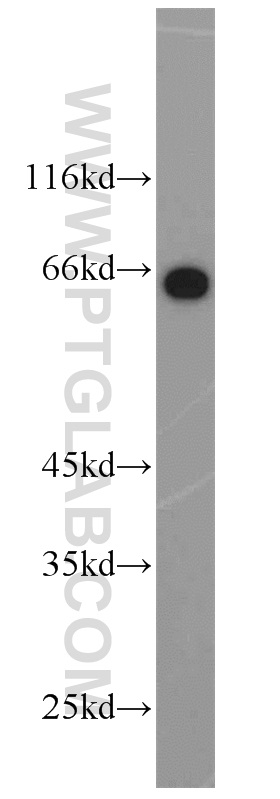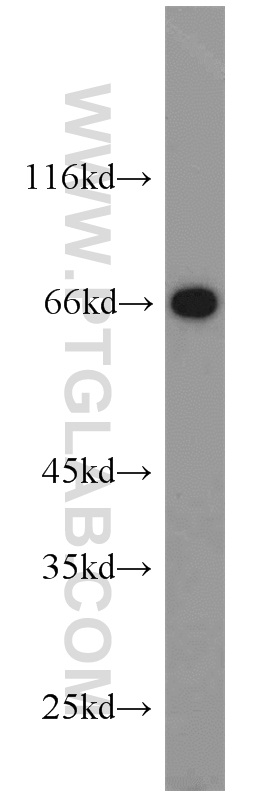验证数据展示
经过测试的应用
| Positive WB detected in | HeLa cells, human brain tissue, mouse brain tissue, mouse lung tissue, rat brain tissue, mouse heart tissue, mouse skeletal muscle tissue |
| Positive IHC detected in | mouse brain tissue Note: suggested antigen retrieval with TE buffer pH 9.0; (*) Alternatively, antigen retrieval may be performed with citrate buffer pH 6.0 |
推荐稀释比
| 应用 | 推荐稀释比 |
|---|---|
| Western Blot (WB) | WB : 1:1000-1:4000 |
| Immunohistochemistry (IHC) | IHC : 1:50-1:500 |
| It is recommended that this reagent should be titrated in each testing system to obtain optimal results. | |
| Sample-dependent, Check data in validation data gallery. | |
产品信息
22883-1-AP targets HSF4 in WB, IHC, ELISA applications and shows reactivity with human, mouse, rat samples.
| 经测试应用 | WB, IHC, ELISA Application Description |
| 经测试反应性 | human, mouse, rat |
| 免疫原 | HSF4 fusion protein Ag18935 种属同源性预测 |
| 宿主/亚型 | Rabbit / IgG |
| 抗体类别 | Polyclonal |
| 产品类型 | Antibody |
| 全称 | heat shock transcription factor 4 |
| 别名 | HSTF 4, HSF 4, hHSF4, Heat shock factor protein 4, CTM |
| 计算分子量 | 492 aa, 53 kDa |
| 观测分子量 | 62-66 kDa |
| GenBank蛋白编号 | BC153061 |
| 基因名称 | HSF4 |
| Gene ID (NCBI) | 3299 |
| RRID | AB_2879184 |
| 偶联类型 | Unconjugated |
| 形式 | Liquid |
| 纯化方式 | Antigen Affinity purified |
| UNIPROT ID | Q9ULV5 |
| 储存缓冲液 | PBS with 0.02% sodium azide and 50% glycerol , pH 7.3 |
| 储存条件 | Store at -20°C. Stable for one year after shipment. Aliquoting is unnecessary for -20oC storage. |
背景介绍
Prokaryotic and eukaryotic cells respond to thermal and chemical stress by inducing a group of genes collectively designated heat shock genes. In eukaryotes, this gene expression is regulated primarily at the transcriptionlevel. Heat shock transcription factors (HSF, also designated HSTF) 1 and 2 are involved in this regulation. HSF1 and HSF2 are upregulated by estrogen, at both the mRNA and protein level. HSF1 is normally found as a monomer, whose transcriptional activity is repressed by constitutive phosphorylation. Upon activation, HSF1 forms trimers, gains DNA binding activity and is translocated to the nucleus. HSF2 activity is associated with differentiation and development, and, like HSF1, binds DNA as a trimer. HSF4 exists as two splice variants and is expressed in heart, brain and skeletal muscle as a homotrimer. HSF4a does not contain a DNA-binding domain and inhibits the formation of HSF1 nuclear bodies, thus repressing HSF1 mediated transcription. HSF4b does contain a DNA-binding domain and colocalizes with HSF1 nuclear bodies after heat shock. This antibody is specific to human HSF4.
实验方案
| Product Specific Protocols | |
|---|---|
| WB protocol for HSF4 antibody 22883-1-AP | Download protocol |
| IHC protocol for HSF4 antibody 22883-1-AP | Download protocol |
| Standard Protocols | |
|---|---|
| Click here to view our Standard Protocols |







